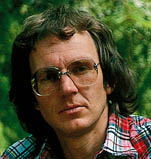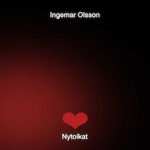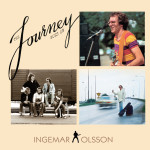2024
200 songs 100 videos


The book with
182 song lyrics
100 color photos
232 pages
Latest album


Ingemar Olsson starts as a young singer and guitarist in local bands in Stockholm, Sweden, performes at pop clubs, theaters and ballrooms, goes through high school and college, falls in love, wonders about life, studies theology, hitch-hikes around Europe, visits the USA, dresses as he likes, says what he feels and expresses his thoughts and feelings through his music.


Ingemar is discovered by a record company and makes his first records as a solo artist, appeares on national radio and TV and is recognized in Scandinavia as a unique artist with his own songs about life and God, society and human relations. He writes and records more songs, gets married, has children, tours with his music and matures as an artist and as a person.
Ingemar writes his songs in the pop / rock tradition, with influences also from latin and black gospel.
Ingemar tours with his band in Europe and in the USA.
Two albums are recorded in Hollywood, California, one of them in English:
(Journey)
He writes a musical – Pappa – which gets recorded and performed all over Scandinavia. His songs are being sung by groups and choirs that invite him to give concerts together with them. One of these concerts, in the Stockholm Concert Hall, gets recorded and released as a live album:
( One Man, One Band and a 1000 Voices – LIVE in Europe).
He performs and hosts at national and international music festivals and gets involved in a human aid project in Pakistan, writes and tours with a multi-media show – including songs, drama and film and makes his first music video.
Ingemar’s songs prove to be long-lived and are sung all over the world. Reviewers call him both “ageless” and “immortal”.
A three weeks’ tour of the Philippines in the early nineties, including concerts in churches, prisons and universities, meetings with farmers, sugar workers and other people, gives new inputs to Ingemar’s life, music and lyrics. It also leads to the translation and recording of the “unofficial national anthem” of the Philippines, the beautiful song Bayan Ko.
He writes twenty new songs in English and records them on two new albums:
IO and ‘Round the Corner
When performing at a youth festival in Harare, Zimbabwe, Ingemar instantly falls in love with the pop music of southern Africa. This new discovery leads to a close co-operation with South African musicians and singers. It also leads to recordings and tours in South Africa and in Sweden.
Ingemar’s African nick-name becomes Ngema
A CD release just before the millennium shift bears the title “Skrik för livet“ (“Cry for life”) and is recorded, first in Swedish, then in Norwegian together with members of Oslo Gospel Choir. When performed live, all songs in sequence assume the form of a church mass. Pop, fusion and soul “Ingemar Olsson style”, that is broadcast on Swedish TV and becomes a music video
Many of Ingemar’s songs reach high positions on the Swedish charts and are among the top ten for months.
A new album in Swedish leads to TV performances and a tour with band, horn section and a dance group.
“Cry for life” renders a Spanish translation by Luis Alfredo Días and is released under the title Grito por la vida.
New songs on the radio hit list; concerts and tours – solo and with band. Sometimes in cooperation with local choirs and musicians; TV and radio performances.
A tour in Thailand, with concerts in Chiang Mai, Mae Na Chon and Sop Moi
A newspaper report
“Nerike’s Daily”, Nov 10, 2002
Editor: Johan Hedberg
Back in South Africa to record the album Mighty Power in Johannesburg and to film three music videos in Margate. (Mighty Power, Welcome to Africa and Sun, Water and Wind)
In 2012 Ingemar takes a part time job as a pastor (!) in a village with 1000 inhabitants, whereof 400 refugees and asylum seekers from all parts of the world. Suddenly Ingemar finds himself in a hurricane of dramatic events, where he must fight against Swedish and international authorities, religions, ‘honor culture’ and the police. Therese experiences leads to the writing of a suspense novel, entitled UTVISNINGEN (“The Deportation”)
Ingemar sees more clearly than ever, that Sweden is no heaven and that religion is one of the world’s biggest problems. The first lines of a new song are born: Jesus Is Not a religion.

In 2015 Ingemar starts a “retro projekt”: The recording of 39 songs that he wrote in the 70s.
The first 13 songs recorded and released on CD, iTunes, Spotify etc. under the title NYTOLKAT (“Interpreted Anew”).
While in the studio with some of the world’s best musicians, Ingemar seizes the moment to record his Swedish translation of Woody Guthrie’s “This Land Is Your Land”. The song is filmed and launched on YouTube as a topical comment to the many Swedish immigrants: Det här är ditt land (This Land Is Your Land)
A second album with “retro songs” is released in February.
Title: Kom igen (Come On … Don’t Give Up)
A new music video is released on YouTube in May / June 2016:
the filming was made in India, with clips also from Africa, America, Asia and Europe.

A third and final Swedish “retro album” – 12 songs written in the 70s, recorded in 2016 – is released November 2016 under the title

Ingemar goes into Studio St1 in Stockholm to make a new digital mix of the 10 songs he recorded in United Western Studios in Hollywood in 1978
While in the studio he also recorded new vocals on some of the songs
– changing some of the lyrics just a little bit here and there.
‘Some thoughts could be said in a better way
Now I had the chance!’
* * * * *
Vision For a New Way • Nowhere Bound • One Life to Live • God is Light
No Matter What • When We Get Together • Incredible • You are My Life
God Gives You a Love Song • Home
The same music tracks, the same musicans and back-up-singers
as on the LP Journey from 1978.
* * * * *